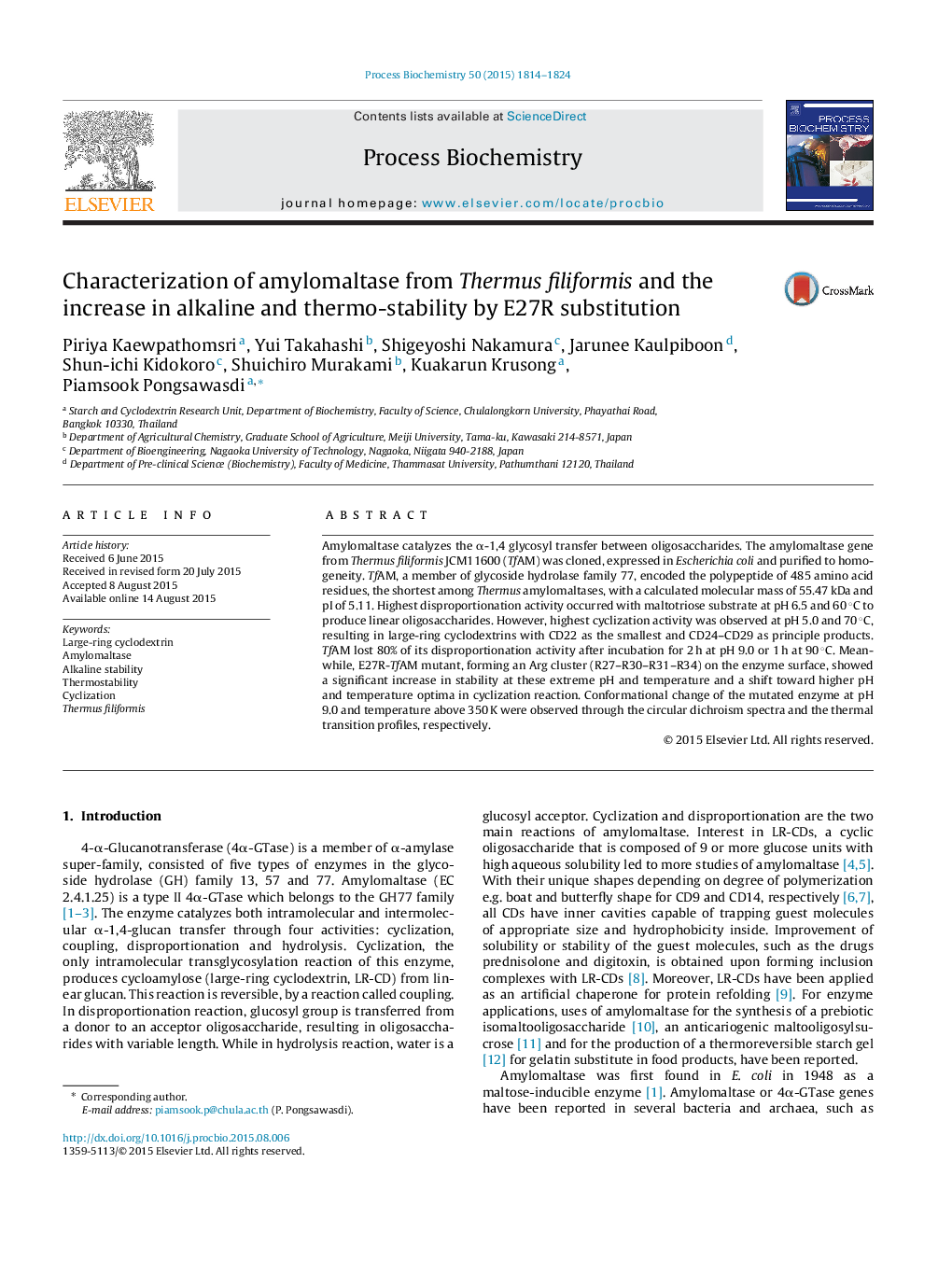| Article ID | Journal | Published Year | Pages | File Type |
|---|---|---|---|---|
| 34281 | Process Biochemistry | 2015 | 11 Pages |
•Amylomaltase from Thermus filiformis (TfAM) is the shortest Thermus amylomaltase.•pH and temperature optima for disproportionation and cyclization were different.•E27R-TfAM displayed a shift to higher pH and temperature optima in cyclization.•E27R-TfAM exerted a significant increase in alkaline and thermo-stability.•E27R-TfAM showed changes in CD spectrum at pH 9.0 and DSC profile at above 350 K.
Amylomaltase catalyzes the α-1,4 glycosyl transfer between oligosaccharides. The amylomaltase gene from Thermus filiformis JCM11600 (TfAM) was cloned, expressed in Escherichia coli and purified to homogeneity. TfAM, a member of glycoside hydrolase family 77, encoded the polypeptide of 485 amino acid residues, the shortest among Thermus amylomaltases, with a calculated molecular mass of 55.47 kDa and pI of 5.11. Highest disproportionation activity occurred with maltotriose substrate at pH 6.5 and 60 °C to produce linear oligosaccharides. However, highest cyclization activity was observed at pH 5.0 and 70 °C, resulting in large-ring cyclodextrins with CD22 as the smallest and CD24–CD29 as principle products. TfAM lost 80% of its disproportionation activity after incubation for 2 h at pH 9.0 or 1 h at 90 °C. Meanwhile, E27R-TfAM mutant, forming an Arg cluster (R27–R30–R31–R34) on the enzyme surface, showed a significant increase in stability at these extreme pH and temperature and a shift toward higher pH and temperature optima in cyclization reaction. Conformational change of the mutated enzyme at pH 9.0 and temperature above 350 K were observed through the circular dichroism spectra and the thermal transition profiles, respectively.
Graphical abstractFigure optionsDownload full-size imageDownload as PowerPoint slide
